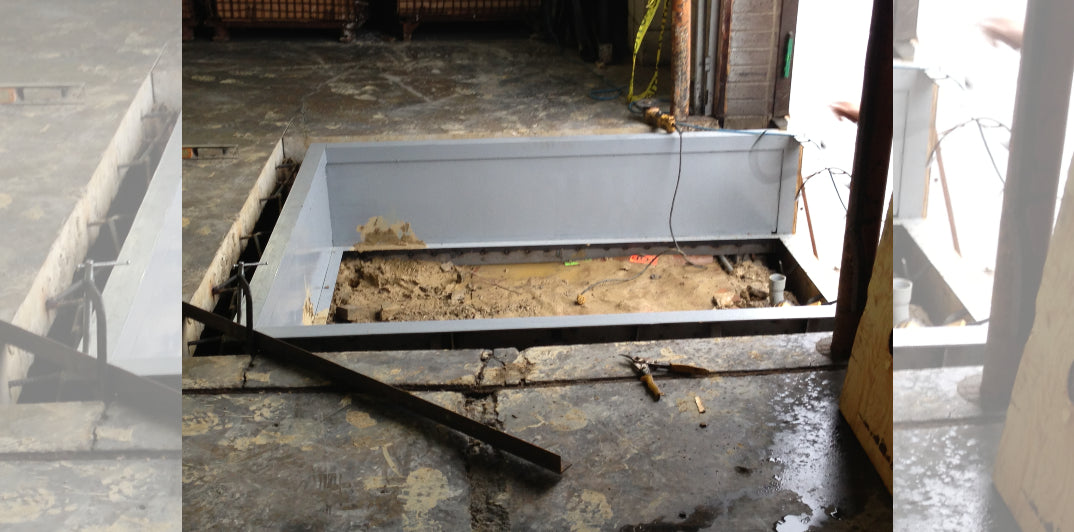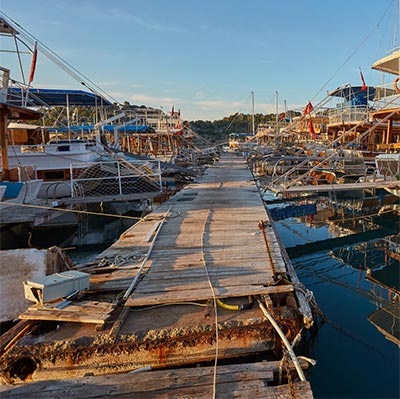Why Normal Maintenance Can Lower Future Dock Repairs
Why Normal Maintenance Can Lower Future Dock Repairs
Blog Article
Effective Dock Repair Techniques: Guaranteeing Architectural Honesty
Making sure the structural honesty of anchors via reliable repair work methods is extremely important for the durability and safety of marine facilities. This entails a multi-faceted technique starting with detailed inspections using sophisticated innovations like finder devices and from another location operated automobiles (ROVs) to find both noticeable and concealed damages. Ultimately, picking the appropriate repair work materials, such as corrosion-resistant alloys and composite materials, is crucial for longevity. Architectural reinforcement approaches, consisting of the application of cross-bracing systems and load-distribution plates, play an essential role in mitigating stress factors. The importance of these techniques becomes apparent when checking out advanced repair methods and preventative maintenance techniques.
Evaluating Dock Damages
Evaluating dock damage is an important initial step in making sure the architectural honesty and security of any docking facility. This first evaluation entails a thorough assessment to determine both surprise and noticeable problems. Trick elements to check out include the dock's foundation, pilings, decking, and equipment. Each element must be looked at for indications of wear, rot, corrosion, or various other types of destruction that could compromise the architectural stability.
Structural engineers or qualified assessors usually perform these analyses making use of specialized methods and devices. For example, underwater examinations might employ sonar devices or from another location ran cars (ROVs) to find submerged damages. Over water, visual examinations are complemented by utilizing dampness meters and various other diagnostic tools to reveal underlying issues not promptly noticeable to the naked eye.

Finding Repair Materials
Choosing the appropriate repair work products is a pivotal action in the dock remediation process, one that straight affects the durability and efficiency of the fixed framework. Product option should be driven by elements such as environmental problems, load-bearing demands, and compatibility with existing dock components. For circumstances, timber is a conventional selection for docks due to its all-natural strength and visual allure. However, choosing the appropriate sort of timber, such as pressure-treated lumber or naturally rot-resistant varieties like cedar or teak, is critical to hold up against marine environments.
In addition to wood, composite products are progressively preferred due to their toughness and low upkeep requirements. Composites, commonly made from a blend of plastic and timber fibers, supply outstanding resistance to rot, pests, and UV damages. For steel docks, picking corrosion-resistant alloys such as galvanized steel or marine-grade light weight aluminum is vital to stop rust and make certain structural stability in saline water conditions.
Epoxy resins and marine-grade sealants are vital for repairing splits and securing joints, giving a water-proof obstacle and improving the dock's total toughness. By thoroughly picking premium materials, dock repair services can accomplish lasting outcomes, thus securing versus future degradation and making certain safe, reputable use.
Structural Support Techniques
Effective architectural reinforcement strategies are important in making certain the security and long life of dock repair services. One basic technique involves the use of steel or composite support bars (rebar) within concrete frameworks. Rebar provides additional tensile toughness, stopping fractures and distributing lots more evenly. This method is especially efficient for docks revealed to heavy lots or rough ecological problems.
Another vital technique is the application of fiber-reinforced polymers (FRP) These products offer high strength-to-weight proportions and outstanding resistance to deterioration, making them optimal for strengthening concrete or wooden docks. FRP can be used in strips or sheets and bound with epoxy materials to boost structural stability.
Supporting and securing systems additionally play a vital duty in structural reinforcement. Cross-bracing, using metal or wooden beam of lights, can neutralize side forces, reducing guiding and motion. Securing systems, such as helical piers or driven stacks, give a stable foundation by moving tons to much deeper, much more stable dirt layers.
Lastly, the integration of load-distribution plates can help distribute weight a lot more equally across the dock's surface area, alleviating local stress points. These strategies collectively make certain that anchors remain safe and durable, with the ability of enduring the roughness of their operational atmosphere.
Advanced Repair Methods

An additional innovative strategy includes underwater welding, which permits for repair work to be carried out without the need to dewater the area. This approach is particularly helpful for resolving structural problems in submerged dock parts, ensuring very little disruption to operations. Improved welding strategies, paired with robotic systems, provide accuracy and reliability, consequently prolonging the life expectancy of the dock.
In addition, cathodic see it here protection systems are applied to stop deterioration in metal dock structures. By utilizing sacrificial anodes or pleased present systems, these techniques effectively reduce the electrochemical procedures that cause material degeneration.
Last but not least, progressed monitoring innovations, such as architectural health tracking (SHM) systems, supply real-time data on the problem of dock frameworks. These systems enable positive upkeep and timely interventions, ultimately making sure the long-term architectural stability of the dock.
Maintenance and Prevention
Maintenance and avoidance are basic principles that underpin the long life and security of dock structures. Normal assessments are extremely important, permitting very early detection of damage, potential weak points, and ecological influences. A proactive approach, including routine look for deterioration, rot, and structural changes, mitigates expensive repair services and extends the dock's functional life.
Preventative steps need to include using safety layers to metal parts to defend against rust and using treated wood to withstand degeneration. In addition, making certain proper drainage and ventilation can avoid water accumulation, which is an usual root cause of structural destruction. Integrating top quality products and sticking to maker guidelines throughout building and repair service stages likewise play essential duties in boosting durability.

Educating employees in dock upkeep best methods makes sure regular application of safety nets. Leveraging technical advancements, such as drones for evaluations and sensors for real-time tracking, can even more improve maintenance efforts. By prioritizing maintenance and prevention, dock proprietors can make certain architectural integrity, operational safety and security, and cost-effective monitoring over the dock's life-span.
Verdict
Finally, keeping the architectural integrity of marine centers necessitates thorough dock fixing strategies. Thorough assessments making use of innovative tools uncover both visible and concealed damages, while the selection of ideal repair materials improves sturdiness. Carrying out structural reinforcement techniques addresses stress and anxiety points properly. Advanced repair work techniques, combined see this page with routine maintenance techniques, guarantee the dock remains functional and secure under varied environmental problems. Adopting these techniques substantially prolongs the life-span and capability of marine framework.
Making sure the structural honesty of docks with efficient repair service methods is critical for the longevity and security of marine facilities.Choosing the appropriate fixing products is a pivotal step in the dock restoration process, one that straight influences the longevity and performance of the repaired framework.Effective architectural reinforcement techniques are crucial in guaranteeing the security and longevity of dock repair work. By focusing on maintenance and prevention, dock proprietors can ensure architectural honesty, functional safety, and affordable administration over the dock's life expectancy.
In verdict, preserving the structural integrity of aquatic facilities necessitates thorough dock repair service methods.
Report this page